Current Affairs – 1 March 2024
Vikramaditya Vedic Clock
The Prime Minister recently inaugurated the Vikramaditya Vedic Clock, which is mounted on an 85-foot tower within Jantar Mantar in Ujjain.
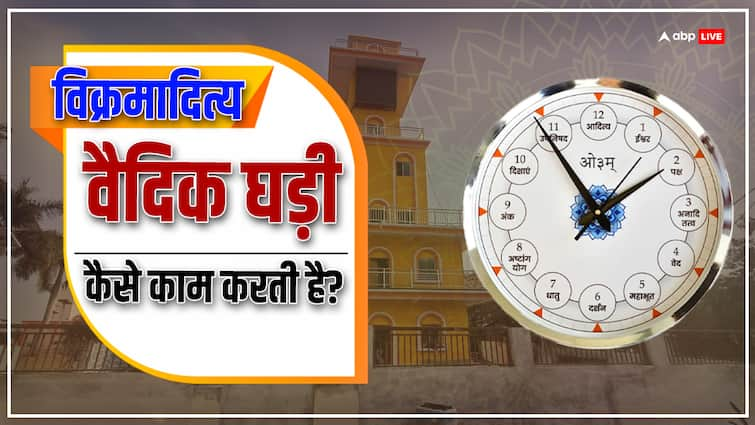
About Vikramaditya Vedic Clock:
- It is the world’s first ‘Vedic Clock’, designed to display time according to the ancient Indian traditional Panchang (time calculation system).
- It has been positioned on an 85-foot tower within Jantar Mantar in Ujjain, Madhya Pradesh.
- It also provides information on planetary positions, Muhurat, astrological calculations, and predictions.
- In addition to this, it also indicates Indian Standard Time (IST) and Greenwich Mean Time (GMT).
- The clock will calculate time from one sunrise to another.
- The period between the two sunrises will be divided into 30 parts, whose one hour consists of 48 minutes, according to ISD.
- The reading will start from 0:00 with the sunrise functions for 30 hours (an hour of 48 minutes).
- It has been developed by Lucknow-based Sanstha Arohan, using digital interventions, enabling it to be connected to the internet and provide a wide range of features through a mobile app named after the clock.
- Why Ujjain?
- Ujjain’s rich heritage in timekeeping dates back centuries, with the city playing a pivotal role in determining India’s time zones and time difference.
- Ujjain is located at the precise point of interaction with zero meridian and Tropic of Cancer.
- Before 82.5E longitude was adopted for IST, Ujjain (75.78E) was considered as Bharat’s time meridian.
- The Vikrami Panchang and Vikram Samvat calendars are also released from Ujjain, which makes Ujjain the ideal location to have the Vaidik Clock.
Juice jacking
Recently, the Reserve Bank of India (RBI) has issued a cautionary message to mobile phone users about juice jacking.

About Juice jacking:
- The term “juice jacking” was first coined in 2011 by investigative journalist Brian Krebs.
- It is a form of cyberattack where a public USB charging port is tampered with and infected using hardware and software changes to steal data or install malware on devices connected to it.
- The attack is used by hackers to steal users’ passwords, credit card information, addresses, and other sensitive data stored on the targeted device.
- This type of attack has been a growing concern, with incidents reported in various public spaces such as airports, hotels, and shopping centres.
- RBI emphasised the importance of protecting personal and financial data while using mobile devices.
- How to prevent such attacks?
- To protect themselves from juice jacking and other cyber threats, mobile phone users have to use their personal chargers and avoid connecting their devices to public USB ports.
- Additionally, using a virtual private network (VPN) and ensuring that devices have the latest security updates installed can help mitigate the risk of cyberattacks.
Narcotics Control Bureau (NCB)
In a coordinated operation at sea, the Indian Navy and the Narcotics Control Bureau (NCB) recently apprehended a suspicious vessel carrying almost 3300 Kgs of contraband.
About Narcotics Control Bureau (NCB):
- The NCB was created in March 1986 in terms of Section 4(3) of the Narcotic Drugs and Psychotropic Substances Act, 1985, which envisages a Central Authority for the purpose of effectively preventing and combating abuse of narcotic drugs and psychotropic substances and their illicit trade.
- The NCB works to identify, investigate, and prosecute drug trade offenders and implement preventive measures to reduce the demand and supply of drugs.
- The Bureau, subject to the supervision and control of the Central Government, is to exercise the powers and functions of the Central Government in taking measures with respect to:
- Co-ordination of actions by various offices, State Governments and other authorities under the N.D.P.S. Act, Customs Act, Drugs and Cosmetics Act, and any other law for the time being in force in connection with the enforcement provisions of the NDPS Act, 1985.
- Implementation of the obligation in respect of counter measures against illicit traffic under the various international conventions and protocols.
- Assistance to concerned authorities in foreign countries and concerned international organisations to facilitate coordination and universal action for prevention and suppression of illicit traffic in these drugs and substances.
- Coordination of actions taken by the other concerned Ministries, Departments and Organizations in respect of matters relating to drug abuse.
- Other Functions:
- It is the apex coordinating agency. It also functions as an enforcement agency through its zones and sub-zones.
- The zones and sub-zones collect and analyse data related to seizures of narcotic drugs and psychotropic substance, study trends, modus operandi, collect and disseminate intelligence, and work in close cooperation with the Customs, State Police and other law enforcement agencies.
- In addition to its enforcement activities, the NCB also works to improve awareness, educate the public on the dangers of drugs and drug abuse, and provide support to those affected by the illegal drug trade.
- NCB is responsible for maintaining and updating the National Data Bank on Narcotic Drugs and Psychotropic Substances, and related matters.
- NCB maintains and updates the National Register of Treatment Providers and Narcotic Drug Dependents.
- NCB provides expert advice to the Central Government on narcotics, psychotropic substances, and related matters.
- The NCB directly reports to the Ministry of Home Affairs (MHA).
International Big Cat Alliance
The Union Cabinet formally announced the establishment of International Big Cat Alliance (IBCA) with one-time budgetary support of Rs 150 crore from the Central Government until 2028.

About International Big Cat Alliance:
- It is an initiative launched by Prime Minister of India in April 2023 in Mysuru commemorating the 50th anniversary of Project Tiger.
- The objective of the IBCA is to ensure cooperation for the conservation of seven big cats: lion, tiger, leopard, cheetah, snow leopard, jaguar, and puma. Five of these cats, apart from jaguar and puma, are found in India.
- Membership: It is open to 97 ‘range’ countries, which contain the natural habitat of these big cats, as well as other interested nations, international organizations, etc.
- It aims for mutual cooperation among countries for mutual benefit in furthering the conservation agenda.
- It would have a multipronged approach in broad basing and establishing linkages manifold in several areas and help in knowledge sharing, capacity building, networking, advocacy, finance and resources support, research and technical support, education and awareness.
- Governance Structure:
- A General Assembly consisting of all member countries.
- A Council of at least seven but not more than 15 member countries elected by the General Assembly for a term of 5 years, and a Secretariat.
- Upon the recommendation of the Council, the General Assembly will appoint the IBCA Secretary General for a specific term.
- Funding: It has secured Government of India’s initial support of Rs. 150 crore for five years (2023-24 to 2027-28).
Melanochlamys Droupadi
Researchers of the Zoological Survey of India (ZSI) recently discovered a new species of head-shield sea slug from Odisha and the West Bengal coast named ‘Melanochlamys Droupadi’.
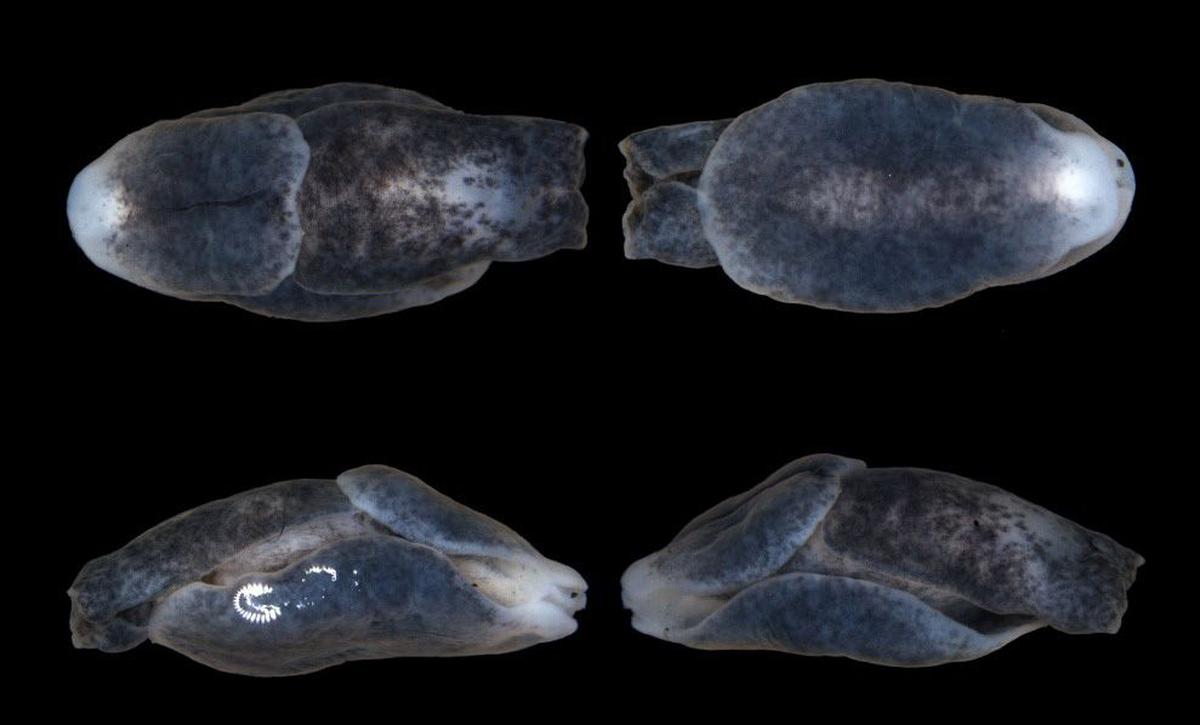
About Melanochlamys Droupadi:
- It is a new marine species of head-shield sea slug with ruby red spot.
- This species belonging to Melanochlamys genus was discovered from Digha of West Bengal coast and Udaipur of Odisha coast.
- Features:
- It is a small invertebrate with a maximum length of up to 7 mm.
- Habitat: It inhabits wet and soft sandy beaches.
- It is brownish black in colour with a ruby red spot in the hind end.
- This particular species of sea slug is hermaphrodite (having both male and female reproductive parts); however, they need another sea slug for reproduction.
- It has a shell inside the body. It has a posterior, accounting for 61 percent of its body length.
- It continuously secretes transparent mucus to form a sheath that prevents sand grains from entering parapodial space.
- It crawls beneath smooth sand to form a moving capsule where the body is rarely visible, leaving behind a trail like a turtle.
What are Sea Slugs?
- Sea slugs are a group of molluscs that live primarily in marine habitats and are slug-like.
- They can be found from the shallow intertidal to the deep sea and from the polar regions to the tropics.
- The sea slugs are rapid hunters and feed upon mobile prey such as other shelled and unshelled sea slugs, roundworms, marine worms, and small fishes.
- So far, 18 species have been discovered across the globe.
- They are distributed in temperate regions of the Indo-Pacific Oceanic realm, but three species are truly tropically distributed, Melanochlamys papillata from the Gulf of Thailand, Melanochlamys bengalensis from West Bengal and Odisha coast and the present species.
Very Short-Range Air Defence System (VSHORADS)
The Defence Research and Development Organisation (DRDO) successfully conducted two flight tests of the Very Short-Range Air Defence System (VSHORADS) missile.
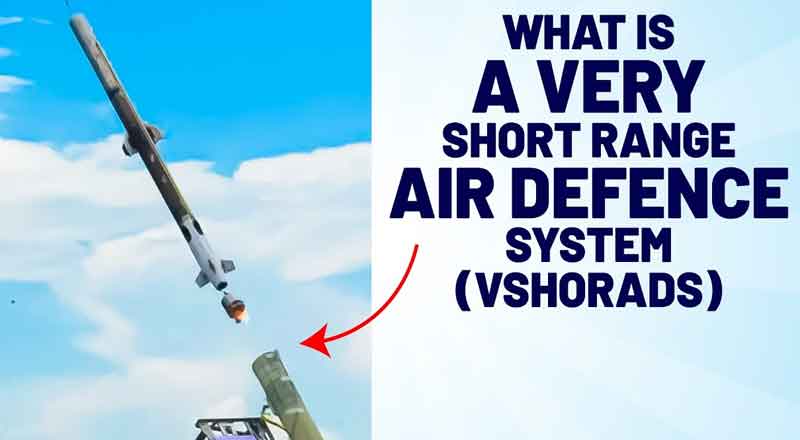
About Very Short-Range Air Defence System (VSHORADS):
- VSHORADS is a fourth-generation Man Portable Air Defence System (MANPAD) specially designed to counter low-altitude aerial threats over short distances.
- These are short-range, lightweight, and portable surface-to-air missiles that can be fired by individuals or small groups.
- It has been designed and developed indigenously by DRDO’s Research Centre Imarat (RCI), Hyderabad, in collaboration with other DRDO laboratories and Indian industry partners.
- Features:
- It is designed to provide short-range air defence capabilities to protect ground forces and critical assets from aerial threats, including helicopters and low-flying aircraft.
- It has a range of up to 6-km.
- The missile incorporates many novel technologies, including a Dual-band IIR Seeker, a miniaturised Reaction Control System, and integrated avionics.
- It is propelled by a dual-thrust solid motor.
- The missile and its launcher were designed by the DRDO to be portable, which enables their quick deployment over difficult terrain.
BioTRIG
A recent study has claimed that BioTRIG, a new waste management technology could help rural Indians.

About BioTRIG:
- It is a new waste management technology based on the pyrolysis system.
- It works by sealing the waste inside an oxygen-free chamber and heating it above 400 degrees Celsius. Useful chemicals are produced in the process.
- In the study, the researchers outlined that three products of pyrolysis — bio-oil, syngas and biochar fertiliser — could help rural Indians live healthier and greener lives.
- Significance
- The syngas and bio-oil facilitate heat and power the pyrolysis system in future cycles and surplus electricity is utilized to power local homes and businesses.
- The clean-burning bio-oil to replace dirty cooking fuels in homes and using biochar to store carbon, while improving soil fertility.
- Computer simulations showed that the BioTRIG system could also be effective in real-world applications.
- It could help reduce greenhouse gas emissions from communities by nearly 350 kg of CO2-eq per capita per annum.
- It could help rural Indians cut indoor air pollution, improve soil health, and generate clean power
What is Pyrolysis?
- It is a kind of chemical recycling that turns leftover organic materials into their component molecules.
- It works by sealing the waste inside an oxygen-free chamber and heating it to more than 400 degrees Celsius, producing useful chemicals in the process.
Doomsday Glacier
Unveiling new details about Antarctica’s “Doomsday Glacier”, scientists have revealed that the Thwaites Glacier has been losing ice since the 1940s.

About Doomsday Glacier:
- Thwaites Glacier, also known as the “Doomsday Glacier,” is located in the remote Amundsen Sea in West Antarctica.
- It’s a wide and fast-flowing glacier, roughly the size of Florida or Great Britain, and it has been a significant focus of scientific study due to its sensitivity to climate change.
- Satellite measurements have shown that the glacier is losing an enormous amount of ice each year, nearly 50 billion tons annually, contributing to rising global sea levels. The glacier already contributes 4% of global sea level rise.
- If the entire Thwaites Glacier were to melt, it could raise the world’s oceans by about 65 centimeters (over 2 feet).
- It also acts as a buffer, holding back neighboring glaciers that contain around three meters of potential sea level rise.
- A critical concern is that much of Thwaites sits on land that is below sea level, in a configuration known as “marine-based.”
- This situation means that as the glacier’s grounding line – the point where the glacier’s ice lifts off the land and starts floating on the sea – retreats inland, it can pass over deeper and deeper valleys.
- This process allows more and more ice to discharge into the sea, which might accelerate the glacier’s melt in a phenomenon known as “marine ice sheet instability.”
United Nations Human Rights Council
At the 55th Human Rights Council of the United Nations, India exercised its ‘Right to Reply’ for a staunch response to Turkey and Pakistan for the mention of Jammu and Kashmir on the platform.
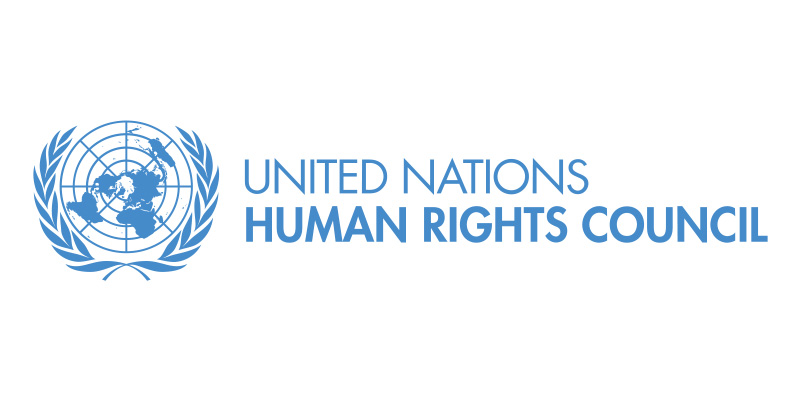
About United Nations Human Rights Council:
- It is an intergovernmental body within the United Nations whose mission is to promote and protect human rights around the world.
- It was created by the General Assembly on 15 March 2006 by replacing the Commission on Human Rights.
- It has 47 members elected for staggered three-year terms on a regional group basis.
- Tenure of the council: The members of the Council serve for a period of three years and are not eligible for immediate re-election after serving two consecutive terms.
- The members are elected by the majority of members of the General Assembly of the United Nations through direct and secret ballot.
- The General Assembly takes into account the candidate States’ contribution to the promotion and protection of human rights, as well as their voluntary pledges and commitments in this regard.
- The Council’s Membership is based on equitable geographical distribution.
- Function:
- It investigates allegations of breaches of human rights in UN member states, and addresses important thematic human rights issues such as freedom of association and assembly, freedom of expression, freedom of belief and religion, women’s rights, LGBTI rights, and the rights of racial and ethnic minorities.
Solar Radiation Modification (SRM)
In a recent meeting, UN delegates withdrew a motion calling for more research into technologies of solar radiation modifications.

- SRM – It aims to address a symptom of climate change by reducing the Earth’s temperature.
- By reflecting more sunlight back into space (or)
- By allowing more infrared radiation from Earth to escape
- Need – There is increasing risk of overshooting 1.5 degree Celsius global warming.
- Methodologies – It includes numerous proposed methods which differ significantly.
- Ground reflection – Painting structures with reflective paints and planting crops with high reflectivity
- Marine Cloud Brightening (MCB) – Spraying sea salt into low-lying clouds to increase their brightness.
- Stratospheric Aerosols Injection (SAI) – Spraying large quantities of tiny particles like Sulphur dioxides or finely powdered calcium carbonate into the earth’s stratosphere.
- Space reflection – Placing reflectors or shields in space
- Exiting IR radiation – Removing IR-absorbing clouds from the atmosphere

- Challenges – None of the methodologies are ready for deployment.
- There could be about possible impacts on weather patterns and agriculture, especially in poorer countries.
- It could serve as an excuse to delay cutbacks on greenhouse gas emissions.
Solar Radiation Modification (SRM) is also known as Solar Radiation Management, Radiation Modification Measures or Solar Geoengineering.
International IP index
India ranks 42 out of 55 in the 12th edition of International Intellectual Property Index.

- Aim – To show economies how to improve IP-driven innovation and creativity and to reveal trends in global IP protection.
- Released by –US Chamber of Commerce released the 12th edition of its International IP Index.
- Findings of the report – It is based on 50 unique indicators.
- A significant improvements in 20 economies.
- While the United States is once again the world leader, there were notable advancements led by Saudi Arabia, Brazil, and Nigeria.
- 27 economies showed no change and 8, including Ecuador, experienced declines due to weak IP enforcement.
In Patents, 23 economies score above 70%, with India and Pakistan making notable legislative changes.
- India’s overall score remained unchanged at 38.64%.
- India’s IP strength – Cinematograph (Amendment) Bill 2023, which includes new language and criminal sanctions on film piracy.
- Issuing of “dynamic” injunction orders, R&D and IP-based tax incentives.
- India’s IP weakness – 2021 dissolution of the Intellectual Property Appellate Board.
- An under-resourced and overstretched judiciary affects rights holders’ ability to enforce their IP rights and to resolve IP-related disputes.
- Limited framework for the protection of biopharmaceutical IP rights.
- Recognizing the critical link between IP rights and economic activity will underscore India’s global competitiveness.
- Significance – It demonstrates the benefits that economies can receive when they adopt robust and enforceable IP standards.
- It serves as a compass to guide world leaders on proven methods to champion innovation and creativity at home.
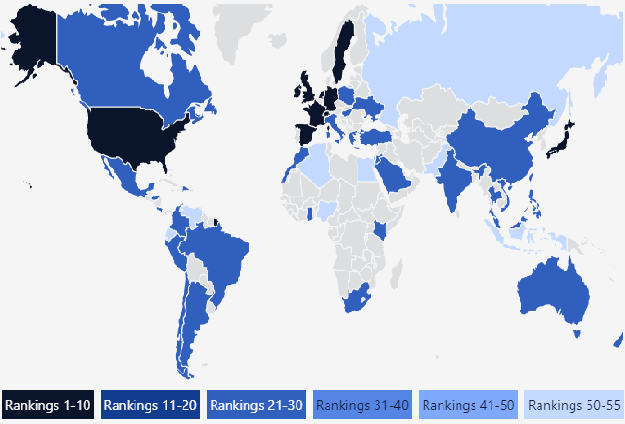
NUCFDC
Union Home Minister and Minister of Cooperation will launch National Urban Co-operative Finance and Development Corporation Limited (NUCFDC).

- NUCFDC – It will be the Umbrella organization for the Urban Cooperative Banks (UCB).
- Objectives – To modernize and strengthen the Urban Cooperative Banking Sector in India, ultimately benefiting both the banks and their customers
- To facilitate communication between banks and regulators, and address challenges faced by Urban Cooperative Banks.
- Capital – It aims to raise capital of Rs.300 crores.
- Working – It has received Certificate of Registration (CoR) from the RBI to operate as a Non-Banking Finance Company (NBFC).
- It will also be allowed to operate as a Self-Regulatory Organization (SRO) for the sector.
- Services – Apart from offering liquidity and capital support, it would set up a technology platform that can be shared by all UCBs, to widen their range of services at a relatively lower cost.
- It can also offer fund management and other consultancy services.
- Significance – It will help in achieving the goal of ‘Sahakar se Samriddhi’ to make ‘Aatma Nirbhar’ Bharat.
|
Urban Cooperative Banks (UCB) in India |
|
Telangana Government Introduces One-Time Scheme
The Telangana state government has issued a directive for the adoption of the One Time Scheme (OTS) across all urban local bodies (ULBs), including the Greater Hyderabad Municipal Corporation (GHMC). This initiative is geared towards alleviating the financial strain faced by property owners who are grappling with mounting arrears interest on property tax payments.

Scope of the OTS
- Applicable to private and government properties within ULB jurisdictions.
- Offers a waiver of 90% on accrued arrears interest.
Eligibility Criteria
- Property owners with accumulated arrears interest until FY 2022-2023 eligible.
- Must clear principal dues up to specified period and pay 10% interest in one go.
- Also open to taxpayers who settled dues, including interest/penalties, until March 2023.
Adjustment of Interest
- 90% of waived interest adjusted against future payments.
- Facilitates long-term compliance with property tax obligations.
Implementation and Implications
- Reflects proactive approach by Telangana government to address financial challenges.
- Aims to alleviate financial strain on taxpayers and bolster revenue collection for ULBs.
OTS: A Commitment to Property Owners and Municipal Sustainability
- OTS introduction signifies commitment to supporting property owners and ensuring sustainable municipal finances.
- Promotes enhanced financial stability and regulatory compliance in Telangana’s urban landscape.
IPS Officer Daljit Singh Chaudhary Named NSG’s New Director General
Daljit Singh Chaudhary, a 1990 batch IPS officer, has been appointed as the Director General (DG) of the National Security Guard (NSG), marking a significant development in India’s security apparatus. Chaudhary, currently serving as the DG of Sashastra Seema Bal (SSB), will now shoulder the additional responsibility of leading the NSG, commonly referred to as the “black cats”.
)
National Security Guard (NSG) Operations and Leadership
- The NSG operates under federal jurisdiction, specializing in counter-terrorism and anti-hijacking operations.
- Trained rigorously to handle high-risk situations, the NSG is deployed selectively for extraordinary circumstances sanctioned by the government.
- The NSG’s swift and decisive actions during the 26/11 terror attacks in Mumbai garnered widespread recognition.
- Proficient leadership ensures swift responses to emergent threats, highlighting the importance of capable leadership within the NSG.
Ministry of Home Affairs Announcement
- An official communique from the Ministry of Home Affairs affirmed Chaudhary’s appointment as Director General of the NSG.
- Chaudhary’s appointment is on an additional charge basis until a regular incumbent is appointed or further orders are issued.
Crucial Role in National Security
- Chaudhary’s appointment underscores the government’s commitment to fortifying national security measures.
- The NSG, with its elite training and specialized skill set, plays a pivotal role in safeguarding the nation against terrorist threats and thwarting hijacking attempts.





